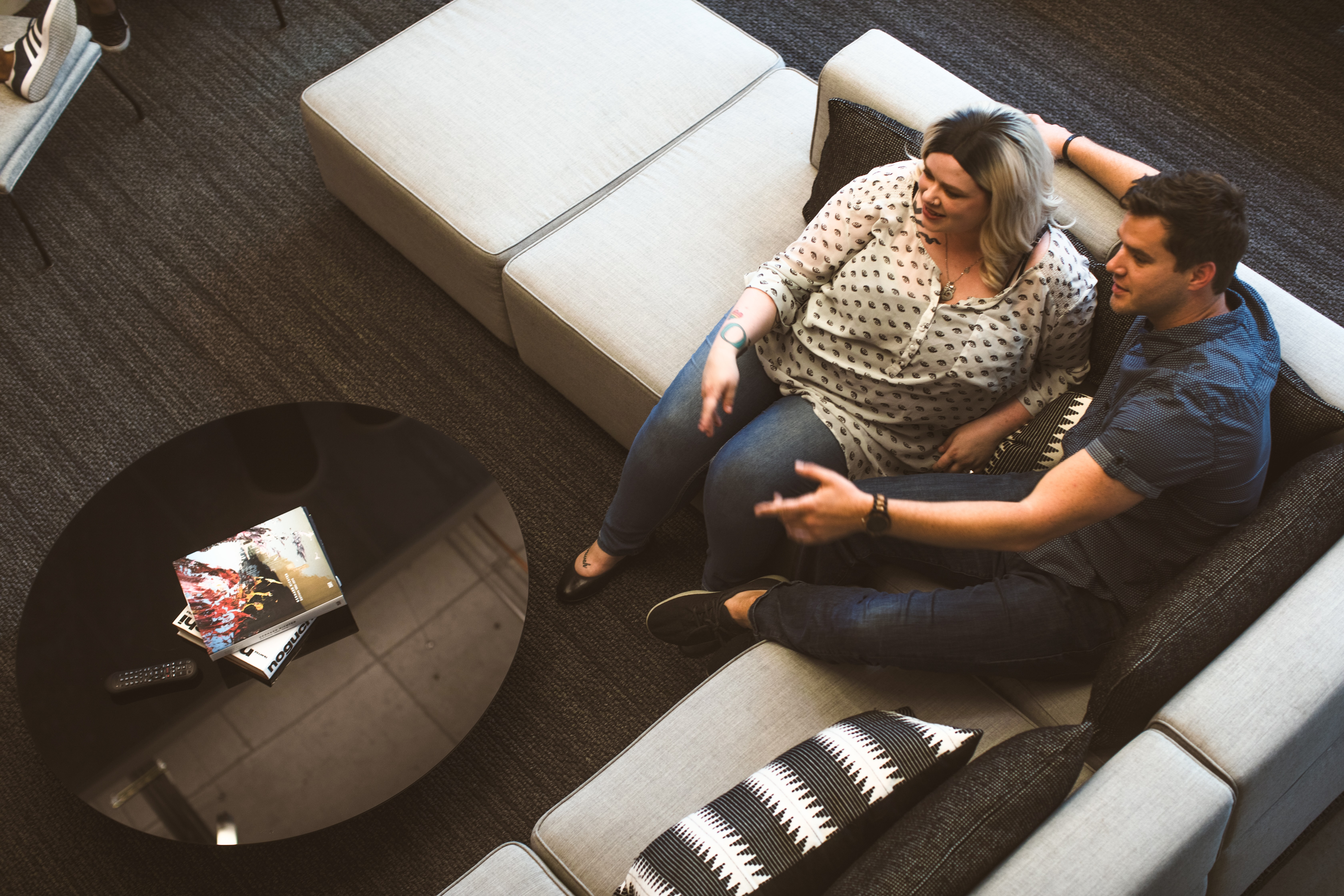6 Steps To The Adoption Process
Adoption is often presented in a joyous light because that is the side of adoption that we usually see. The unseen part of adoption is the grievous part. Adoption does mean family and new beginnings, but it also signifies deep loss and sorrow for all three members of the triad (birth parents, adoptees, and adoptive parents); but this is particularly true for birth parents and adoptees. It is difficult in our culture to accept that something can be simultaneously so full of joy and grief. But this is life is both scary and exciting, lovely and frustrating, beautiful and difficult. Recognizing adoption for what it is helps the adoptee and birth parents to pursue what is necessary for healing in their journey. Although adoption is not the ideal scenario for anyone, there is immense good that can come from it. Adoption has provided me with two of my life’s most precious gifts: my son and my daughter.
If you are considering adoption, you might be overwhelmed at the adoption process. This makes sense as there are a lot of steps and important decisions you must make as a birth parent. However, it doesn’t have to be overwhelming. As a birth parent, you do not have to make all of your decisions right now. Instead, take small steps in the adoption process. Additionally, there are many organizations and agencies designed to help you with the process of adoption or services that you can receive if you decide to raise your baby but may need some help. Whatever you choose, remember that you are not alone in this process.
Types of Adoption
If you decide to pursue adoption, there are three different types that you can pursue: closed, open, and semi-open. Each type of adoption has advantages and disadvantages so it is important to consider all aspects before choosing the type of adoption you would like to choose. You can talk through the advantages and disadvantages of each type of adoption with an options counselor at an agency like the Gladney Center for Adoption. Also, you can follow the journeys of adult adoptees to see and understand their experiences. As an adoptive parent, it has been tremendously helpful for me to hear the experiences of adult adoptees because it helps inform my parenting strategies and methods. It may also help inform your decision about types of adoption, ethical adoption agencies, and potential adoptive families.
Open Adoption
In an open adoption, there is open communication between the adoptee and birth parents. The extent of the openness varies from adoption to adoption. The birth parents could attend milestone events and birthday parties. Adoptees could have regular contact with their siblings. The openness could be limited to phone calls, cards on birthdays, and occasional visits. As the birth parent, you can choose the extent of the openness with the adoptive parents and decide what is best for you and the child.
Closed Adoption
Closed adoptions offer more privacy for the birth parents. Having a closed adoption prevents contact with the adoptee unless it is through the agency or lawyer. This allows the birth parents’ confidentiality if that is what they are seeking.
Semi-Open Adoption
A semi-open adoption falls somewhere in between open and closed adoptions. This option gives you the opportunity to keep the door of contact open, especially when the child may want more information about his birth mother and father as he or she grows older. However, birth parents and adoptive parents can decide what they believe is appropriate to share. Communication, as with a closed adoption, is always through an agency or lawyer. Once a relationship is established and both parties feel comfortable with the boundaries set, it is possible to shift from a semi-open adoption to open adoption.
Since adoptees with a closed adoption have experienced many problems and hardships about not knowing their biological parents, birth parents in the USA have moved more towards open adoptions when possible. Open adoptions, to some extent, alleviate worry and uncertainty that adoptees may face in not knowing their biological parents. It also allows adoptees to have the opportunity of knowing and loving their birth parents, who play a vital and valuable role in their lives. This relationship, though different from the traditional parent-child relationship, is fundamental in the healing process in an adoptee’s life.
If you choose to not pursue adoption, there are many organizations and agencies seeking to help struggling parents in raising their children. You can look at programs, such as Gladney’s Rest and Respite program, that help you with common challenges that come with parenting newborns and toddlers. They can help you get on your feet and set you up for success as you provide for and raise your children.
Steps
If you choose to pursue adoption, the process can certainly be overwhelming. Finding an adoption agency can help you narrow down your plan and move forward, one step at a time (and they can help you no matter where you are in the United States.). Here are some of the steps you will need to take in the adoption process.
1. Know your options.
Becoming pregnant is life-changing. There is another being living inside of you, growing as you grow. Similarly, deciding whether or not to adopt is life-changing. It will change the trajectory not only of the life of the birth parents but also the life of the adoptee and adoptive parents. As you start the decision-making process, consider your options. You can place your child for adoption, or you can choose to raise the child. With adoption, you can choose to go through an agency or a lawyer. If you choose to raise the child, you can seek out support from organizations that support moms who might need some extra help (this could be for a myriad of reasons). You can check out these organizations that help single parents in need. Just know, no matter where you are, people and organizations are willing to help if you do not want to place your child for adoption.
2. Talk to a trusted professional and/or friends and family.
As you make this decision, it will be essential for you to process with other people who know you, as well as professionals who can help you work through the choice. Talking with a trustworthy family and friends will remind you that you are not alone on your journey. They can help you consider different aspects of the decision and how it will impact you and your family in the long run. Additionally, they can be there for you to mentally and physically support you, as you make a very difficult decision. Make sure, however, these are people that you can trust and who are fully supportive of you. While you must have a support system, other people don’t have a say in your final decision. You alone choose what is best for you and your child.
Additionally, if you don’t already go to a counselor or therapist, I suggest finding one. If you don’t know where to start, you can begin by looking at an adoption agency that you trust. They will connect you with an options counselor, helping you understand your options. Then, if you choose to move forward with adoption, they will walk you through the process.
As you are talking with trusted friends, family, and professionals, consider what your goals are in life, who you want to be, and how you want to parent. Are those options for you right now? What plans can you make to achieve your goals? Talking with others (especially others who care about you) can assist you in making the most informed decision and feeling overwhelming peace when you decide whether or not to choose adoption.
3. Meet a caseworker and choose a family.
A caseworker will guide you through the necessary formal and legal steps of adoption. They will ask you to fill out an initial interest form, which will be your first step in making an adoption plan. Soon after that, you will have the opportunity to choose a family. You will look through parent profiles, examine their values and beliefs, location, and choose what type of adoption you desire (as discussed earlier). It is so important that you have a say in this because it will determine not only where your child will find family, but also who you, as the birth parent, will develop a relationship with if you choose open adoption.
4. Plan the delivery.
To ensure a peaceful delivery to adoptive parents, it is important that you develop a plan ahead of time. This will allow you time, as the birth parent, to feel confident about what will happen. You can choose how you want the delivery to occur and customize the delivery to meet your needs and desires. You have the right, as a birth parent, to choose how this plays out.
5. Develop a Post-Adoption Plan
If you decide to complete your adoption through an agency, you will have the opportunity to create a post-adoption plan. This allows you the opportunity to think through your goals and decide if you would like to pursue education, college, trade school, or job skills training. Many agencies have programs like this. The one at Gladney is called the Next Steps Program. Next Steps assist birth mothers not only with education, but with other important life necessities, such as obtaining a driver’s license, GED, or citizenship.
Since pregnancy and placing a child for adoption are such life-changing decisions, filled with both joy and sadness, it is important that birth mothers (and fathers) receive the support and guidance they need following the adoption. Gladney provides support groups and individual counseling to birth moms throughout their lives, as adoption is an ongoing journey, not a one-time event. Adoption, for all members of the triad, can be difficult to navigate. It can be isolating to be a birth mother if you don’t know others who have gone through the same thing. Additionally, it is important to recognize that adoption can evoke very difficult emotions, and it is important and helpful to work through those feelings with a licensed professional or with others who have gone through a similar experience.
Encouragement
Wherever you are right now in the adoption process, choose to take your next step toward love. Love for yourself, love for your child, love for both of your futures. You are worthy of love, no matter whatever your choice may be. Although adoption is not the ideal option, beautiful things can grow from less than ideal circumstances. Both of my beautiful children came to me through adoption, and I couldn’t be more grateful for them and their birth parents.
As a birth parent, you play a vital role in a child’s life, whether you choose an open, semi-open, or closed adoption. They value and love you, just as you value and love them. In an open adoption, you have the opportunity to know and love your precious child in a different way than the traditional parent role. This gives you the unique ability to connect and cherish your child, even if you cannot raise them.
In closing, if you are considering adoption, remember that there are agencies, organizations, and people willing to walk alongside you. You are not alone in this process. First, talk with trusted friends, family, and/or a counselor about your decision to pursue adoption. If you choose to move forward in the process, research the types of adoption and what kind of adoption you would like to pursue. Next, find a lawyer or agency willing to walk you through the necessary steps to adopt. Then, make a plan with a caseworker, choose your family, deliver your child, and start a program like Next Steps. You have the opportunity to grow and heal, as well as play a vital role in the life of your child.
Are you considering placing a child for adoption? Not sure what to do next? First, know that you are not alone. Visit Adoption.org or call 1-800-ADOPT-98 to speak to one of our Options Counselors to get compassionate, nonjudgmental support. We are here to assist you in any way we can.
Related Posts
-
 9 Adoptive Family Questions You Should Ask
When you are entering into the adoption triad by choosing adoptive parents to
9 Adoptive Family Questions You Should Ask
When you are entering into the adoption triad by choosing adoptive parents to -
 4 Things to Remember About An Unexpected Pregnancy
I was only seventeen and a senior in high school when I saw
4 Things to Remember About An Unexpected Pregnancy
I was only seventeen and a senior in high school when I saw -
 Is Adoption Good?
It was the summer of 2000. The weather was hot. The grass was
Is Adoption Good?
It was the summer of 2000. The weather was hot. The grass was
